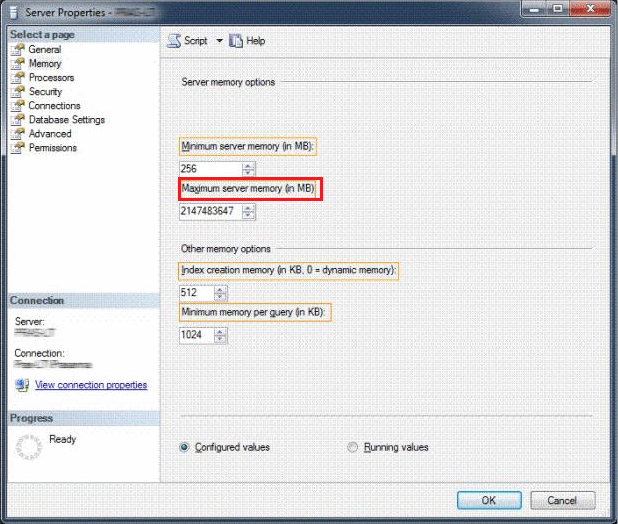Microsoft 70-462 Administering Microsoft SQL Server 2012 Databases Online Training
Microsoft 70-462 Online Training
The questions for 70-462 were last updated at Oct 15,2025.
- Exam Code: 70-462
- Exam Name: Administering Microsoft SQL Server 2012 Databases
- Certification Provider: Microsoft
- Latest update: Oct 15,2025
DRAG DROP
You administer a Microsoft SQL Server 2012 server.
You need to install the Power View components on a stand-alone server.
Which three actions should you perform in sequence? (To answer, move the appropriate actions from the list of actions to the answer area and arrange them in the correct order.)

You administer a Microsoft SQL Server 2012 database.
You have a SQL Server Agent job instance that runs using the service account. You have a job step within the job that requires elevated permissions. You need to ensure that the job step can run using a different user account.
What should you use?
- A . A notification
- B . A schedule
- C . A job category
- D . A proxy
You maintain several databases on a 32-bit Microsoft SQL Server 2005 instance on a Windows Server 2008 R2 64-bit server.
You need to migrate the databases to a 64-bit SQL Server 2012 instance on the same server. You also need to ensure that the new Transact-SQL functionality in SQL Server 2012 can be used in the database after the migration.
What should you do? (Each correct answer presents part of the solution. Choose all that apply.)
- A . Perform a side-by-side installation of a 32-bit SQL Server 2012 instance.
- B . Perform a side-by-side installation of a 64-bit SQL Server 2012 instance.
- C . Perform an in-place upgrade to 64-bit SQL Server 2012.
- D . Detach the database from the old instance and attach it to the new instance.
- E . Change the compatibility level of the database.
You administer a Microsoft SQL Server instance. You discover that the SQL Agent Error Log file is rapidly growing in size.
You need to ensure that the SQL Agent Error Log file does not grow rapidly when SQL Server
agent jobs execute.
What should you do?
- A . Execute the sp_cycle_agent_errorlog stored procedure.
- B . Configure event forwarding.
- C . Enable the Auto Shrink option on the master database.
- D . Enable the Auto Shrink option on the msdb database.
- E . Disable the Include execution trace messages feature.
You are a database administrator for a Microsoft SQL Server instance.
You need to ensure that data can be migrated from a production server to two reporting servers with minimal data latency. You also need to ensure that data on the reporting server is always accessible.
- A . Database Snapshot
- B . Log Shipping
- C . Availability Groups
- D . Change Data Capture
You administer a Microsoft SQL Server 2012 database that contains a table named
AccountTransaction.
You discover that query performance on the table is poor due to fragmentation on the IDX_AccountTransaction_AccountCode non-clustered index.
You need to defragment the index. You also need to ensure that user queries are able to use the index during the defragmenting process.
Which Transact-SQL batch should you use?
- A . ALTER INDEX IDX_AccountTransaction_AccountCodeON AccountTransaction.AccountCode REORGANIZE
- B . ALTER INDEX ALL ON AccountTransaction REBUILD
- C . ALTER INDEX IDX_AccountTransaction_AccountCodeON AccountTransaction.AccountCode REBUILD
- D . CREATE INDEX IDXAccountTransactionAccountCodeON AccountTransaction.AccountCode WITH DROP EXISTING
You administer a Windows 2008 server hosting an instance of Microsoft SQL Server 2012 Standard Edition. The server hosts a database named Orders.
Users report that a query that filters on OrderDate is taking an exceptionally long time. You discover that an index named IX_OrderDate on the CustomerOrder table is heavily fragmented.
You need to improve the performance of the IX_OrderDate index. The index should remain online during the operation.
Which Transact-SQL command should you use?
- A . ALTER INDEX IX_OrderDateON CustomerOrderDISABLE
- B . ALTER INDEX IX_OrderDateON CustomerOrderENABLE
- C . ALTER INDEX IX_OrderDateON CustomerOrderREORGANIZE
- D . ALTER INDEX IX OrderDateON CustomerOrderREBUILD
You administer a Microsoft Azure SQL Database database named Orders.
You need to create a copy of Orders named Orders_Reporting.
Which Transact-SQL command should you use?
- A . BACKUP DATABASE Orders TO DISK = ‘D:Orders.bak’RESTORE DATABASE Orders_Reporting FROM DISK = ‘D:Orders.bak
- B . BACKUP DATABASE Orders TO DISK = ‘D:Orders.bak’CREATE DATABASE Orders_Reporting FROM DISK = ‘D:Orders.bak
- C . CREATE DATABASE Orders_Reporting AS COPY OF Orders
- D . BACKUP DATABASE Orders TO DISK = ‘D:Orders.bak’MIRROR TO DISK = ‘Orders_Reporting
You administer a Microsoft SQL Server failover cluster.
You need to ensure that a failover occurs when the server diagnostics returns query_processing error.
Which server configuration property should you set?
- A . SqlDumperDumpFlags
- B . FailureConditionLevel
- C . HealthCheckTimeout
- D . SqlDumperDumpPath
HOTSPOT
You administer a Microsoft SQL Server 2012 database instance. Other applications run on the server. Some of the applications are throwing errors because of insufficient memory.
You need to ensure that the other applications have sufficient memory.
Which setting should you configure?

Latest 70-462 Dumps Valid Version with 301 Q&As
Latest And Valid Q&A | Instant Download | Once Fail, Full Refund



